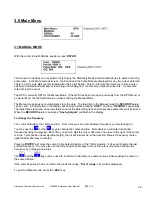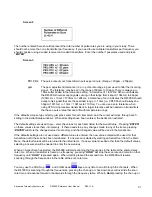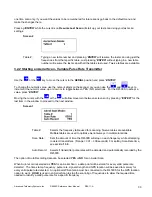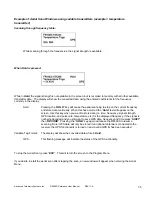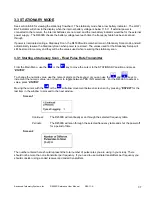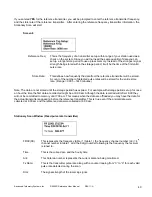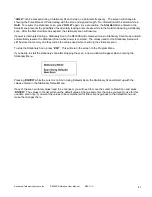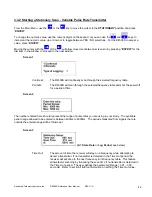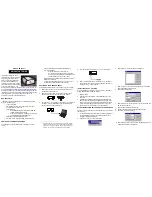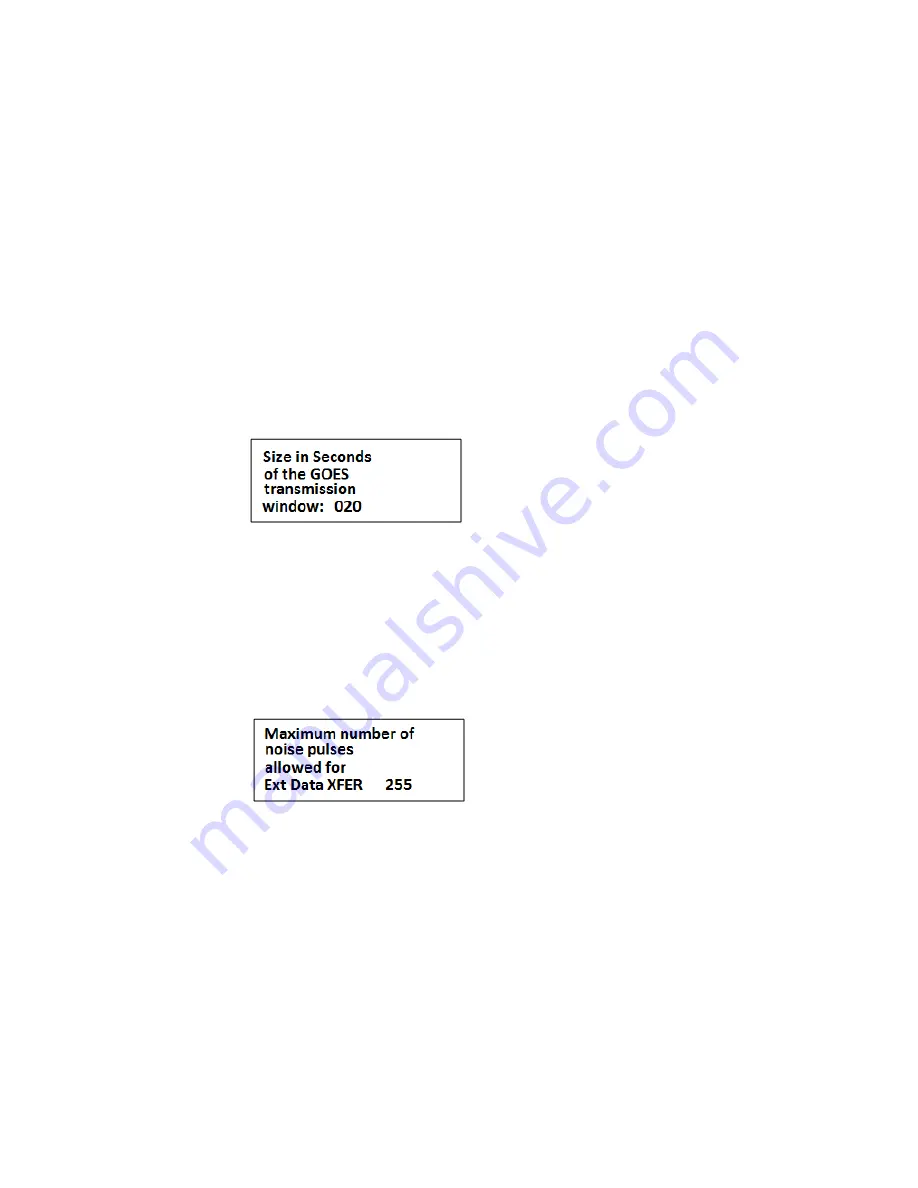
Advanced Telemetry Systems, Inc. R4500S Reference User Manual R05-11-A
28
1200:
Informs the R4500S that the GOES satellite will be transmitting data back to Earth
at 1200 baud. This value is assigned by NESDIS (National Environmental Satellite,
Data and Information Service).
300:
Informs the R4500S that the GOES satellite will be transmitting data back to Earth
at 300 baud. This value is assigned by NESDIS (National Environmental Satellite,
Data and Information Service).
N/A:
Informs the R4500S that it doesn’t need to worry about the GOES transmission
rate. You would select this if you wanted to take advantage of the GOES data
format without actually using the GOES transmitter and setup.
Enter a 3 to finish or a 1 or 2 to continue to the next screen and press “
ENTER
”.
Screen 3
Enter the value of the transmit window size assigned by NESDIS and press “
ENTER
”.
Screens 2 and 3 are used to limit the amount of data dumped out the serial port. The data size will be a size that
can be handled by hourly satellite transmissions. Data that doesn’t get sent to the GOES transmitter this hour will
be saved for the next hours dump. If you anticipate having intervals where you collect more data than can be sent
by a satellite transmission, you will need to make sure you have intervals where you collect limited data so the
system can catch up.
Screen 4
Enter a numeric number from 1 to 255 and press
“ENTER”
.
When using pattern matching, pulses are expected to be received at a certain fixed rate. Those pulses occurring at
that rate are considered matches. Any pulses that are received in addition to the matches are considered noise. It
is normal for noise to be present during any scan. If too much noise is present your system may store data for
frequencies when no transmitters are within range. This is referred to as a false positive. The amount of information
that can be sent each hour to GOES is limited by the transmission baud rate and your transmission window. If your
system is prone to detecting false positives you may want to filter out data where a lot of noise pulses occurred.
Data with a certain amount of extra noise pulses would remain in the R4500S for later retrieval but would not be
sent to the GOES. The default for this feature is 255 and is the same as having the filter deactivated. It is
recommended that you do not change this value unless you have positively confirmed the presence of false
positives and you are not able to transmit all your logged data. When you do change it, use your existing data set
as a guide and keep this number as high as possible while still eliminating your false positives.
















